Manicure/Pedicure: 5 Nail Conditions Techs Should Know About
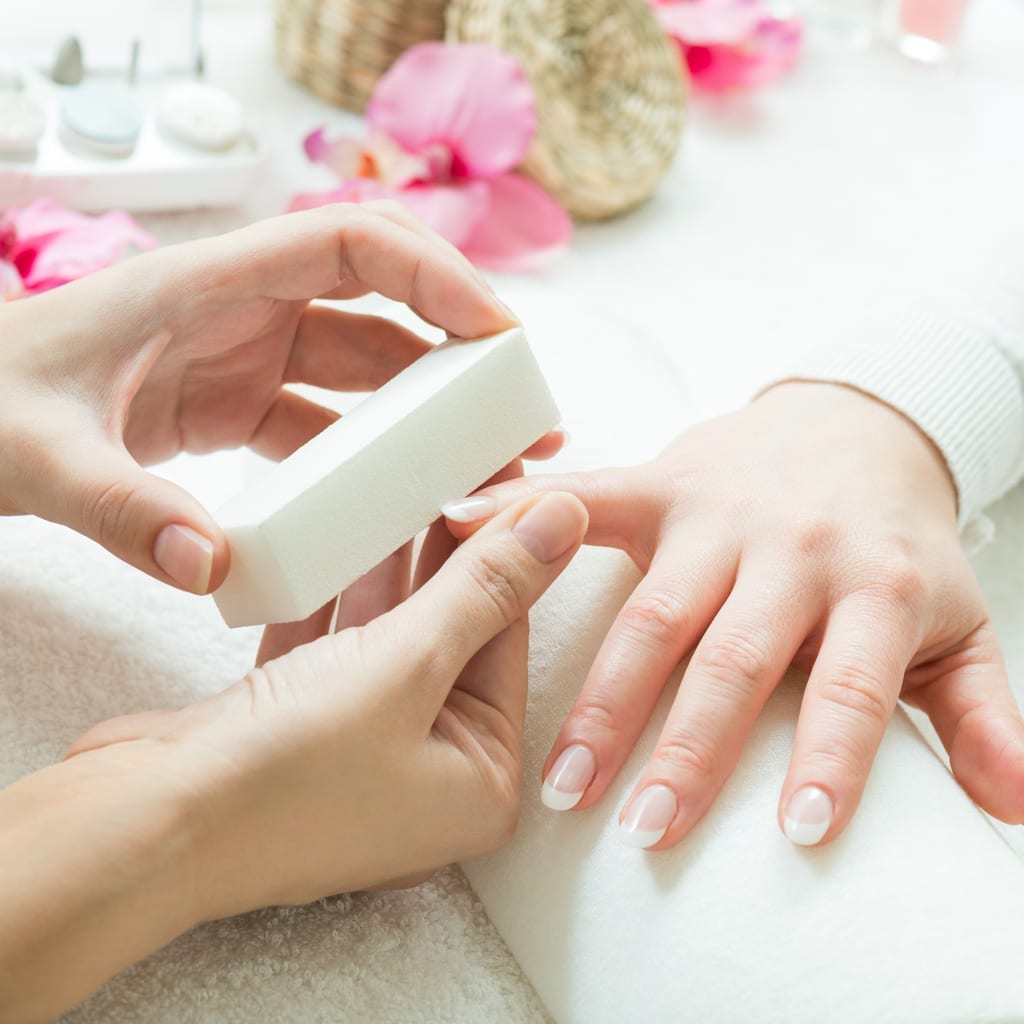
As nail technicians, we see more than a few handfuls of nails throughout the course of a day. Now expand that number over weeks, months, or even years… ok, I think we’re getting the point. We see and work on thousands of clients’ nails and, more often than not, we have to spend some time repairing their nails before even getting to their requested enhancements. Often times their nails were damaged because their work week was unusually tough; sometimes their hand accidentally got stuck in a car door (ouch!). These issues are common and the ailments can be remedied at home or right there in your salon. Sometimes the nails we work on are telling us a story far beyond a rough work week or a specific, isolated incident. In those cases, the best thing we can do for our customers is refer them to see a doctor. Here are some warning signs of more serious health conditions we can identify through a person’s nails, and what to do or suggest when we see them.
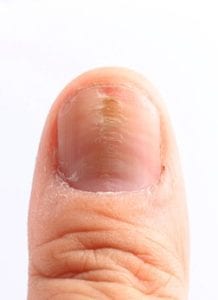
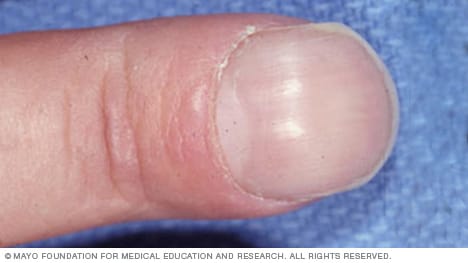
Nail Clubbing – Nail Clubbing is nothing more than a widening of nails that occurs when the nailplate becomes thick. Historically, Hippocrates documented the actual clubbing of fingers as a disease itself; however, it has been found to be a symptom of multiple other diseases such as lung disease, or liver and cardiovascular diseases. While treating the symptom of clubbing nails won’t remedy any of the more impactful reasons for why it is occurring, it has been found that soaking the nails in a mixture of warm olive oil and a spoon of lemon juice can homeopathically straighten out the nail.
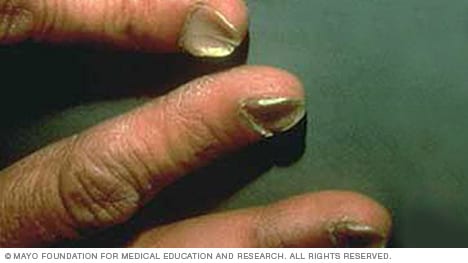
Koilonychia – More commonly known as Spoon Nails, Koilonychia is a condition of thinning nails that appears in varying forms. In mild cases the nails appear wavy, but in more severe cases the nail develops a spoon shaped indent in the middle usually large enough to hold a drop of liquid. This occurs mostly due to iron imbalances in one’s diet (either too much absorption due to hemochromatosis or not enough because of iron deficiency anemia), but in rare cases has also been attributed as a symptom of kidney disorder. People undergoing chemo and radiation therapy for cancer may also experience the effect of spoon nails. Koilonychias can be an indication of some serious health conditions and consulting with a physician as soon as the signs are visible is recommended. When the doctor locates the cause of the symptom they can provide direction for an appropriate treatment. The easiest way to address a mild case of koilonychias at home is to increase the amount of leafy greens, high in iron and vitamins in one’s diet. If prescribed, iron and vitamin supplements may provide relief as well.
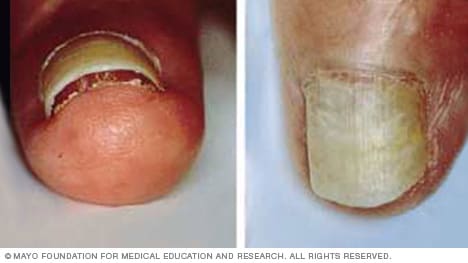
Onycholysis – Also known as detached nails, Onycholysis is defined as a gradual and painless separation of the nail from the nail bed; the nail acts as a lever, prying itself away. Most cases of Onycholysis are seen in women with long fingernails. This common problem can also be due to an injury or infection, or even a reaction to a particular drug or consumer product (oddly enough even a nail hardener). Regardless of the cause, usually several nails are affected and should be treated before potentially becoming permanently deformed. If the space under the nail becomes infected the nail will become opaque with a white (yeast infection) or green (bacterial infection) tinge. Controlling an infection must be addressed first before the nail is capable of reattaching. For treatment, the entire part of the unattached nail must be clipped off. The affected hand should be kept out of water as much as possible, and the nails should be clipped daily until reattachment is seen. Additional medications may be prescribed by a physician.
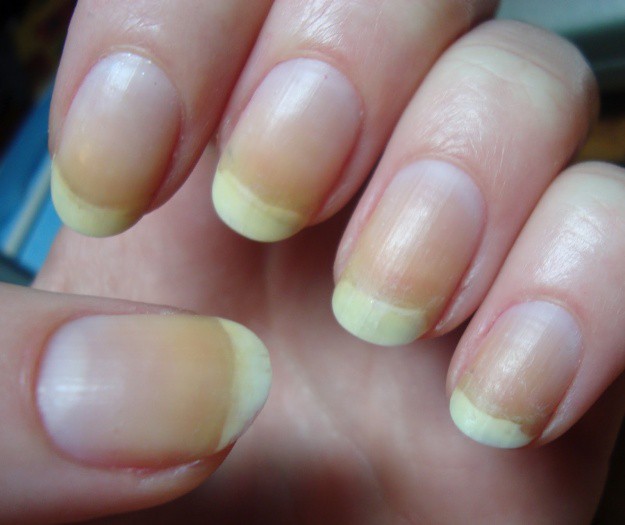
Yellow Nail Syndrome – Indicative of many things, the basic cause of yellow nail syndrome (YNS) is unknown. YNS is well named due to a visible yellowish discoloration, but more importantly there is a noticeable slowing or stopping of new nail growth; the nail may also appear thicker. Yellowed fingernails can happen from using a nail polish that stained the nail or simply from eating certain foods with your hands – this is not the same as YNS, but the nails can still be treated using the same “at-home” methods. Yellowed toenails are usually a sign of a fungal infection, and consultation with a physician is recommended; an untreated infection can spread throughout the nail to the root and cause more serious problems. Tea tree oil is useful to treat such an infection, but a physician may need to prescribe oral medication or a pharmaceutical nail paint/solution. Although YNS is fairly common, it can be a sign of chronic bronchitis or other respiratory diseases and shouldn’t be taken lightly. On the plus side, since YNS is so common people all over have found many different home remedies that work for them in re-whitening nails. Nutritional supplements of Zinc and vitamin E have been found to be effective in controlling the advancement of yellowing, while repeatedly soaking the nails in freshly squeezed lemon juice or a solution of denture tablets and water are helpful in removing the yellow hue. Applying a mixture of half cup of water and 3-4 spoons of hydrogen peroxide or using a whitening toothpaste (if hydrogen peroxide is an active ingredient) several times a week will actually work at turning yellow nails whiter as well.
Nails tell a story of health that may or may not even be felt. We can all too easily blame unhealthy nails on poor habits, or we can take a step back and listen to what they’re telling us. As technicians, we are sitting in the perfect position to listen if, or when they decide to speak up. Manicures and pedicures are highly effective at reducing stress levels, but they don’t actually cure any illnesses. Nonetheless, it is important to be able to recognize when there might be a more serious illness or catalyst for poor nail health so that any potential curing can be appropriately addressed.
By Joseph Pedersen, Content Strategist at DeEnterprises Inc., a Chemical Manufacturer of Manicure and Pedicure Products.